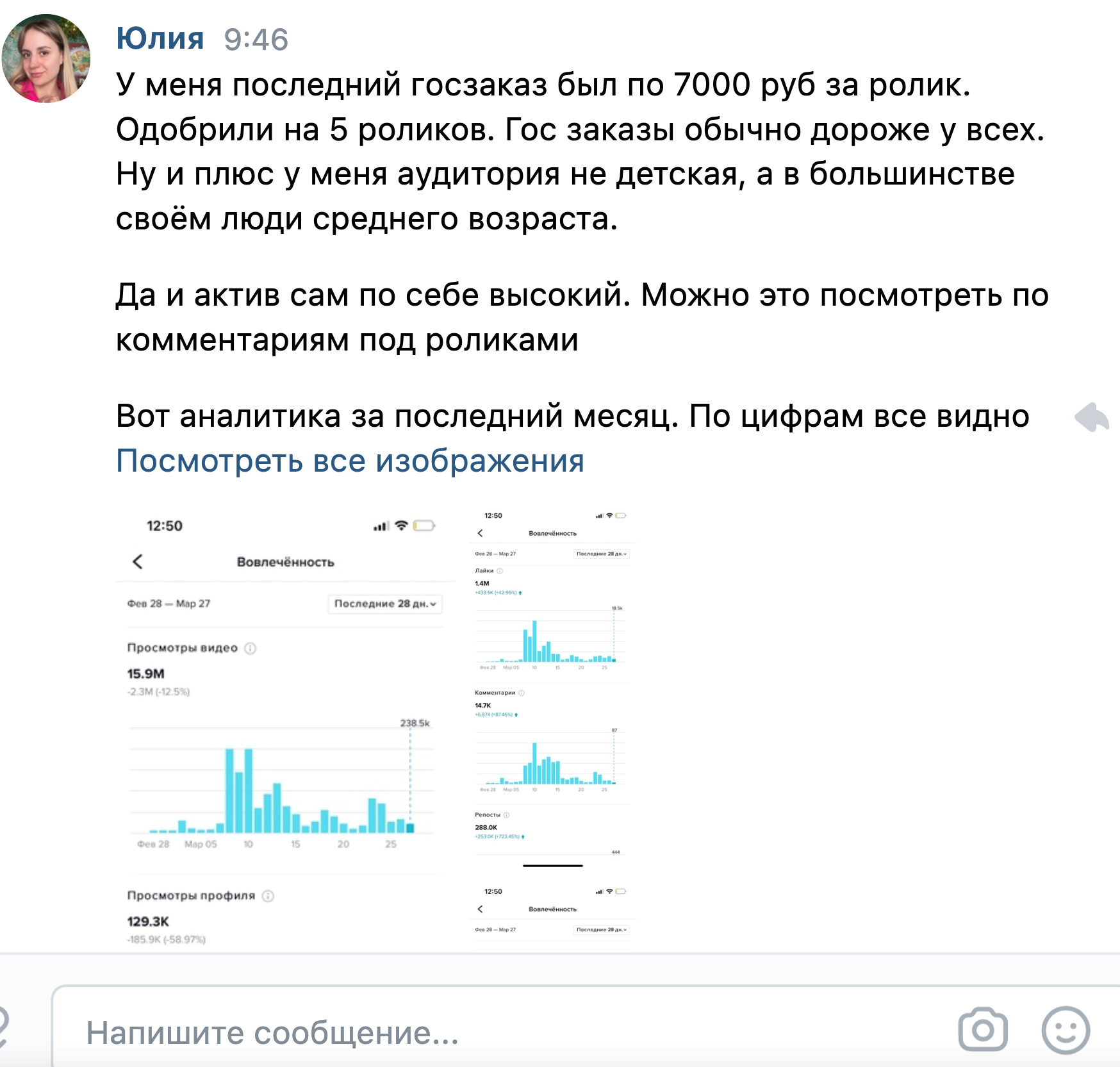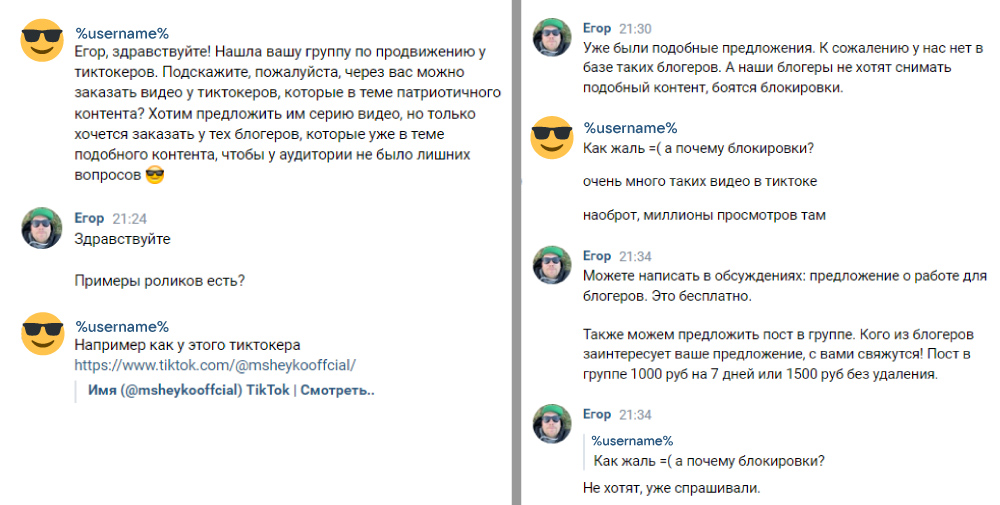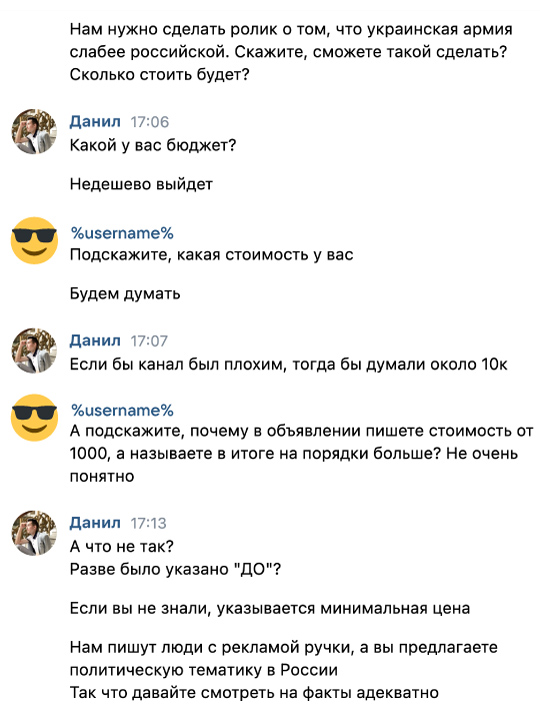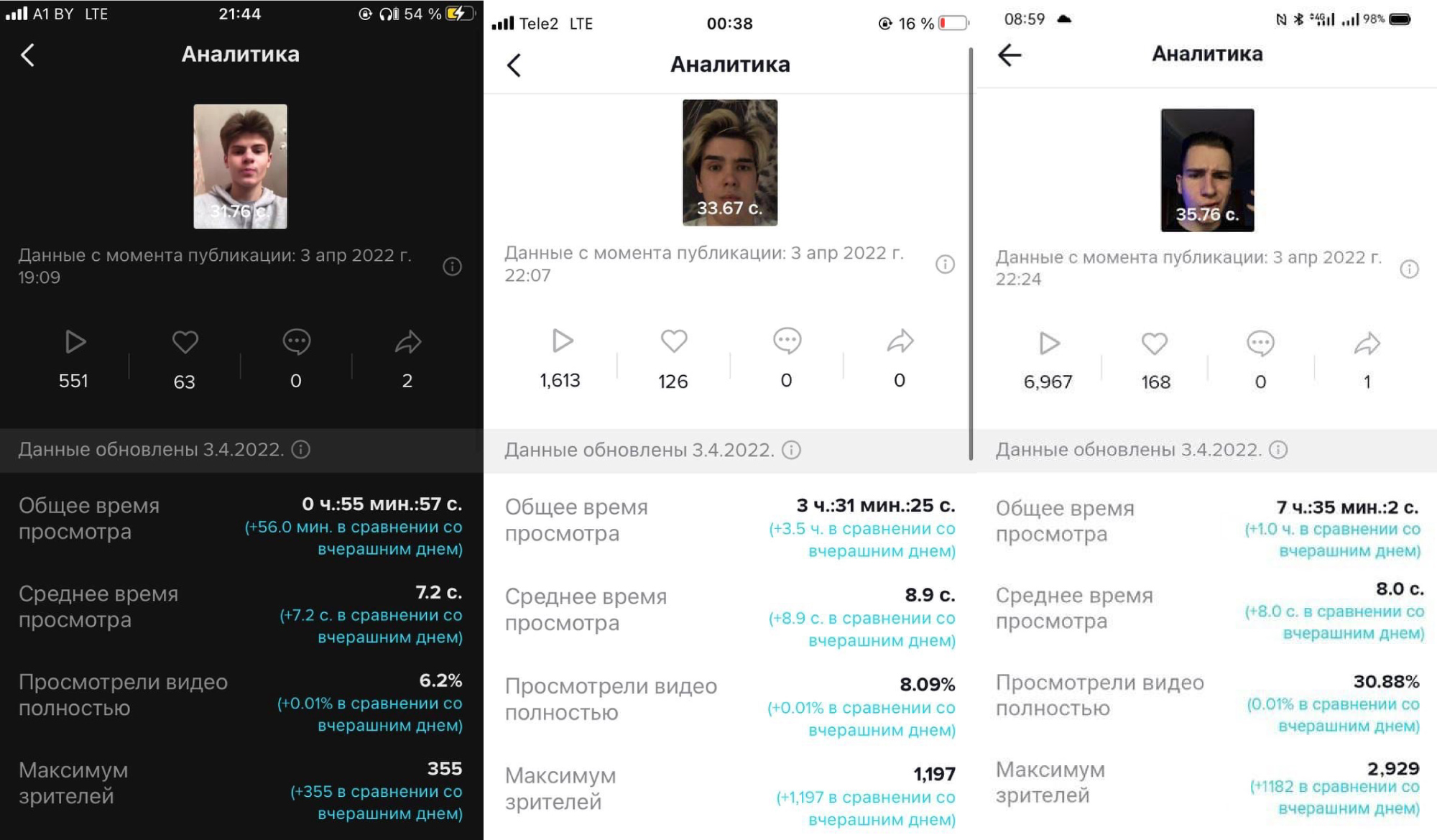Pro-Kremlin content on TikTok from the very beginning began to stand out not only for its quantity, but also for its contrast with the usual content for a generally apolitical social network – not to mention the fact that this is the “youngest” social network (76% of the audience is under 25 years old), and there are not so many sincere supporters of power in this demographic segment. According to the NewsGuard agency, content containing fakes about Ukraine was shown by algorithms even to those users who had just registered or had never been interested in the military conflict before. The statistics of the service show that in the first few months, TikTok, flooded with the hashtags #zours and #I'm not ashamed, collected more than 2 billion views. About a billion more were raised by TikTok promoting PMC Wagner.
Video blogger Yulia Pyatnikovskaya about how well Russia does without European products and resorts, collect millions of views. It is difficult to judge how many living people among those who looked, but most of the commentators have the Russian flag on their profile picture.
The blogger agreed to post a “patriotic” video for 7,000 rubles. According to Yulia, that's how much her other works with similar content cost. Her only condition is that "the video was not very hard."

As practice has shown, Yulia does not care what exactly she has to convince her audience and whether there is an internal logic in this. The Insider correspondent suggested that Yulia post a video stating that it was not the generals, but pro-government bloggers, such as Anton Krasovsky, who were to blame for the retreat of the Russian troops (“test purchase” was carried out shortly after this event). The girl admitted that she did not follow the events very much, and asked to explain to her “from the point of view of our government” what exactly was happening at the front. And then she took the initiative, read the articles "in one of the news feeds, which is now recognized as extremist," and realized that the news about the withdrawal of troops "sent people in the wrong direction." Julia tried to write a script, but she couldn't figure out how to blame the bloggers for the retreat of the army. Then she offered a video in which she said that the Russian army had left Kyiv not because they had surrendered, but in order to organize a humanitarian corridor.
Julia offered not to pay for the order in full while TikTok had restrictions on downloading content, so the video was never published in her feed. Since April, she has completely stopped posting videos on the social network.
Not everyone is ready to take politicized content. “Already asked. Our bloggers do not want to shoot such content, they are afraid of blocking, ”Egor Charushin, producer of one of the Tiktoker groups, refused to publish a patriotic video.

There were also those who requested a publication fee several times higher than usual. So, for a completely politically harmless video that the Ukrainian army is weaker than the Russian one, the manager of a blogger with one and a half million subscribers, Danil Zhendarmov, asked for 40 thousand instead of the usual one to five thousand. He explained this difference in price by the content of the video.

The 19-year-old owner of a small Tiktoker agency, Yura Khomich, turned out to be more accommodating. He was given the task of responding to the publication that Putin was taking deer blood baths by explaining that this was normal and that other Soviet leaders did so. The main argument is the phrase "it is common knowledge that Stalin and Lenin bathed in blood." Bloggers were not embarrassed by anything, and they agreed to upload the video for the amount of several thousand rubles. Only one tiktoker refused, explaining that he “didn’t know how to present” the topic.

A few weeks later, bloggers removed the videos we ordered from their accounts, however, as well as other content in support of the Russian authorities.
The Insider experimented with even more ridiculous terms of reference. One of them was to post a video with the “sensational” idea that Ukrainian President Volodymyr Zelensky was “actually a Jew” and his real name was Bayraktar. Several tiktokers agreed to make this video, for example, Marina Bespalova, who had previously published videos about Zelensky. She asked about the content of the video only after completing the task.

After Russia invaded Ukraine, TikTok restricted Russian users from accessing certain features of the app. Bloggers from Russia were banned from uploading videos and broadcasting live. The Chinese company explained this with the law on fakes. Due to the TikTok bans, the user's usual feed has changed. If earlier the algorithms offered videos by interests, and new users were offered videos of general interest, like kittens, make-up and comical situations, now the screens were filled with propaganda military or patriotic content. This was also confirmed by social media researchers: if before the ban there were about half of pro- and anti-war videos, then after the ban was established, 93.5% of the content related to the war became precisely propaganda. This continues to this day: most of the feed of users from Russia is based on old videos, they are shown content uploaded back in February or March or earlier.
To get around the TikTok ban, bloggers have turned to VPNs. With it, they changed their visible location by passing traffic through a server in another country. However, due to the algorithms of the social network, only those users who also use the VPN could see these new videos. “There really is a way to upload new videos bypassing restrictions, but it’s worth remembering that you are doing it under a VPN, which means that only those users who have it enabled see your videos,” explained the author of the Russian Marketing Telegram channel Semyon Efimov . Such new videos and content from other countries are sometimes still seen by users from Russia: Tracking Exposed researchers believe that “shadow promotion” from the platform itself is involved in this, since the social network has not officially changed its position. According to analysts, in order to see political content from other countries, it is usually enough for a user to subscribe to the corresponding account. According to The Insider, TikTok's algorithms rely on thematic and political trends and select appropriate content even from old videos. For example, when bloggers Yulik and Dasha Kaplan, popular on the social network, announced their divorce in the summer of 2022, old videos with them began to appear in the feed, although there were no new videos about the divorce itself in the feed.
If before the TikTok restrictions there were about half of pro- and anti-war videos, then after – 93.5% of the content related to the war became propaganda
Not all bloggers have adapted to the new realities – there are 8 times fewer new videos. According to Brand Analytics, the number of authors grew in March, but then fell sharply throughout the year and in September amounted to about 45 thousand – at the beginning of the year there were about 300 thousand. However, since the user on TikTok mainly watches videos selected by algorithms, the audience of the social network has not decreased. According to a study by Mediascope , now on average about a quarter of Russians over 12 use TikTok every day. Only the audiences of Facebook and Instagram, which were declared extremist in Russia in March, have drastically decreased — apparently, the Russians moved from there to Telegram and VKontakte. Some influencers from TikTok have also moved there.
This is not the first time TikTok has been confronted with posting political content. During protests in Myanmar in early 2021, people in military and police uniforms posted videos of death threats against protesters. Anti-vaccine content has also become a problem for TikTok. Then the company banned the use of certain words in posts. So, users were blocked for mentioning blood. Russian feminists who talk about menstruation have had to contrive and come up with new ways to write this word – for example, krov. For breaking the ban TikTok was already banning individual accounts back then. However, a complete ban on posting videos for all users located in a certain territory was applied for the first time.


